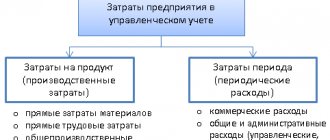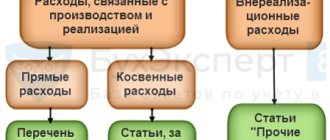An integral responsibility of an accountant is the correct and timely calculation, registration and transfer of all tax payments.
Taxes and fees are mandatory payments levied on legal entities and individuals intended to finance state municipal expenditures. Tax payments are free of charge. Fees are payment for the performance of legal actions by the relevant authorities: issuing licenses, granting any rights.
The Tax Code of the Russian Federation establishes federal, regional and local taxes and fees. Code also provides for the following taxation systems :
- general;
- simplified;
- patent;
- single agricultural tax;
- a single tax on imputed income established for certain types of activities.
Frequency of tax payment and reporting
Compliance with the deadlines for submitting reports and remitting taxes will allow you to avoid penalties and additional inspections of the activities of enterprises by tax authorities. As a rule, even in the absence of a taxable base and accruals, reporting is mandatory.
| Name of tax (payment) | Rates | Payment deadlines | Timing and type of reporting |
| VAT | 0% - for export; 10% - for food, children's goods, book products, medical products, etc.; 18% - for other goods and services. | Quarterly, no later than the 25th day of the month following the reporting quarter | The declaration is submitted electronically quarterly, no later than the 25th day of the month following the reporting quarter. |
| Income tax | 9% - income from interest on a number of government securities; 10% - income of non-resident carriers; 20% - basic rate; 30% - profit of foreign companies, profit from hydrocarbon production at sea, etc. | Quarterly, no later than the 28th day of the month following the reporting quarter | The declaration is submitted quarterly, no later than the 28th day of the month following the reporting quarter. |
| Personal income tax | 9% - on dividends until 2015, interest on mortgage-backed bonds issued before 2007; 13% is the base rate for individuals, including dividend income from 2015; 15% — dividends of non-resident individuals; 30% - other income of non-resident individuals; 35% - from winnings, prizes, etc. | At the time of payment of income | Register f. 2-personal income tax is provided by enterprises annually until April 1 of the reporting year |
| Excise taxes | Solid, ad valorem and combined, differentiated by type of goods | Monthly until the 25th day of the month following the reporting month, for straight-run gasoline and ethyl denatured alcohol - until the 25th day of the 3rd month following the reporting month | The declaration is submitted every month by the 25th day of the month following the reporting month, for straight-run gasoline and ethyl alcohol - by the 25th day of the 3rd month following the reporting month |
| Contributions to compulsory social insurance | 2.0-2.9% depending on the category of payers | Monthly, until the 15th day of the month following payment | Reporting according to f. 4-FSS quarterly until the 20th day of the month following the reporting quarter |
| Contributions to compulsory pension insurance | 22% | Monthly, before the 15th day of the month following the month of payment | Quarterly report on f. RSV-1 until the 15th day of the 2nd month following the reporting quarter |
| Property tax | Calculated based on cadastral value | Quarterly until the 30th day of the month following the reporting quarter, annually - until March 30 of the reporting year | The declaration is submitted quarterly by the 30th day of the month following the reporting quarter, for a year - by March 30 of the reporting year |
| simplified tax system | 6% of income or 15% of income minus expenses | Quarterly - advance payments until the 25th day of the month following the reporting quarter | Declaration annually by March 31 of the year following the reporting year - for LLCs, for individual entrepreneurs - by April 30 |
| Unified agricultural tax | 6% of income minus expenses incurred | For the 1st half of the year - until the 25th day of the month following the end of the half-year, for the year - until March 31 of the following year | Declaration annually before March 31 of the year following the reporting year |
| UTII | 15% of the amount of imputed income | Quarterly – advance payments due by the 25th day of the month following the reporting quarter | Declaration quarterly by the 20th day of the month following the reporting quarter |
| Patent system | 6% of potential income | When the patent is valid for up to 6 months. – in full amount until the expiration of the patent, more than 6 months. – 1/3 of the tax amount in the first 90 days, the remaining 2/3 until the expiration of the patent | Providing a declaration is not provided |
Accounting and reporting
Accounting reporting forms for 2021 have been changed. Accounting reporting for 2021 must be submitted using new forms. The header parts of all reporting forms have been modified. A new line has appeared where you need to mark the mandatory audit. The Federal Tax Service recommended machine-readable forms of financial statements: for those who report in a general manner - KND form 0710099 for those who report using simplified forms - KND form 0710096C reporting for 2021 Order of the Ministry of Finance of Russia dated April 19, 2019 No. 61n New rules for reflecting temporary and permanent differences Temporary and permanent differences, net profit must be calculated and reflected in the financial results statement in a new way. Mandatory - starting with reporting for 2021. Voluntary - starting with reporting for 2021. PBU 18/02, taking into account the latest changes. Order of the Ministry of Finance dated November 20, 2018 No. 236n Order of the Ministry of Finance dated April 19, 2019 No. 61n The financial statements must reflect information about the cessation of the use of long-term assets for sale. Long-term assets for sale must be taken into account separately as part of current assets. If the company ceases to use long-term assets for sale, this fact must be reflected in the financial statements as part of information about discontinued operations. Long-term assets for sale include:- fixed assets and other non-current assets that the organization does not use because it decided to sell, except for financial investments;
- material assets for sale that remain from retiring non-current assets or that were removed during repairs, modernization, reconstruction.
Federal Law No. 325-FZ of September 29, 2019 It is not necessary to print and sign financial statements on paper. Reports prepared in electronic form are equated to reports prepared and signed on paper. Previously, it was believed that reporting was compiled and approved only after it was printed on paper and signed by the director. Now the director decides for himself: to sign the paper version of the reporting for him or to certify the electronic version with an electronic signature. From reporting for 2021 Federal Law of November 28, 2018 No. 444-FZ
Tax accounts
The following accounts are used to reflect transactions related to the calculation, accounting and payment of taxes:
- Account 19 reflects the amount of VAT on material assets acquired by the organization: fixed assets, intangible assets, inventories.
- Account 68 takes into account all payments for personal income tax, taxes on real estate, vehicles, income from transactions with securities, mining, environmental fees, fees for the use of natural resources, etc.
- Account 69 is used to record contributions to social insurance and security, health insurance, and contributions to the Pension Fund.
- Account 90 is intended for accounting for tax payments subject to return (reimbursement) after the sale of products, primarily VAT and excise taxes.
- Account 91 is used to reflect VAT and excise taxes related to sold tangible and intangible assets that were on the balance sheet of the enterprise.
- Account 99 is used to account for the company’s losses, which include paid income tax, penalties, fines for violations of the procedure and deadlines for accrual and payment.
Read more - Article on the payment of various taxes to the budget.
Benefits for the IT sector in Russia in 2021 and 2021
In Russia there are several benefits that allow you to reduce taxes in the IT sector. From 2021, some benefits will become even more attractive.
2020
Reduced insurance premiums (14% instead of standard 30%)
In 2021, IT companies are using a reduced rate on insurance premiums and paying 14% instead of 30% (standard).
These benefits can be obtained if:
- the company is accredited by the Ministry of Telecom and Mass Communications;
- You receive at least 90% of your income from IT activities: selling or developing software products;
- The average number of employees is at least 7.
Preferential conditions are available only to legal entities. Individual entrepreneurs working in the IT field are not entitled to it.
Reduced income tax rate
Few entrepreneurs and accountants know about this benefit and use it. However, preferential income tax comes in several formats.
R&D expenses
Some research and development (R&D) expenses can be written off at a factor of 1.5 ( ). Such expenses include, for example, employee salaries, purchase of development equipment, and contractor services. The full list has been approved (II. Information and telecommunication systems).
The tax office has the right to request supporting documents, so you need to carefully record expenses.
Instant depreciation when purchasing computer equipment
Companies using OSNO can depreciate property whose value exceeds 100,000 rubles, distributing the amount over time in proportion to its useful life. In 2021, IT companies were allowed to immediately write off the costs of purchasing such equipment. This is called instantaneous depreciation.
There are several conditions:
- accreditation with the Ministry of Telecom and Mass Communications;
- at least 50 employees;
- at least 90% of income is received from activities in the IT field, including at least 70% from foreign counterparties.
VAT
Another benefit available to IT companies in 2021 is exemption from VAT. You can use it when selling exclusive rights to software and databases and selling rights to use software and databases under a license agreement.
2021
Reduced insurance premiums (7.6% instead of 30%)
In 2021, IT companies will be able to pay insurance premiums at a rate of 7.6% instead of the previous 14% for the IT sector and the generally accepted 30%.
To receive this benefit, you must meet a number of conditions:
- accreditation with the Ministry of Telecom and Mass Communications;
- at least 90% of income from activities in the IT field;
- the average number of employees is at least 7 people;
- sale and maintenance of software and databases only of our own production.
Companies that develop software and databases intended for advertising, finding clients and concluding transactions will not be able to take advantage of the benefits. The condition for receiving benefits only by legal entities also remains. Individual entrepreneurs will still not be able to qualify for a rate reduction.
Reduced income tax rate R&D expenses
The conditions under which R&D expenses can be written off with an increasing factor of 1.5 will remain the same in 2021.
VAT
In 2021, you will be able to pay VAT at 3% instead of 20%. To receive the benefit, the company must meet a number of requirements:
- accreditation with the Ministry of Telecom and Mass Communications;
- from 7 employees;
- income from IT activities - at least 90%;
- sales and maintenance of proprietary software and databases.
This benefit does not apply to companies that produce software and databases for advertising, customer search and trade.
How to get accredited by the Ministry of Telecom and Mass Communications
It is enough to write to the Minister of Communications and provide it with the signature of the manager, confirming that your company operates according to OKVED group 62. You can send documents by registered mail with a description of the attachment or take them to the address: 125039, Moscow, Presnenskaya embankment, 10, building 2, IQ-quarter.
The Ministry of Telecom and Mass Communications must inform the company about the state accreditation of the company or its refusal within 30 working days from the date of receipt of the documents.
Basic accounting entries for taxes
- Overpayment of taxes is reflected in accounting and returned from the budget.
- Tax penalties - payment of a fine for late taxes.
- Property tax is a regional tax that is imposed on certain types of fixed assets.
- Transport tax is a tax imposed on a company’s transport property.
- Land tax - paid by all land owners, including legal entities.
- Postings on UTII - how to take this type of tax into account in accounting
- Insurance premiums - how to pay taxes to the Pension Fund, Social Insurance Fund and Compulsory Medical Insurance Fund.
- Personal income tax - how organizations should pay income tax for employees. Reflection of personal income tax in transactions.
- Unified social tax - 34% for employees of the organization.
Income tax
- Income tax - classifier and main entries for accrual and payment.
- Reflection of tax losses - if an enterprise has incurred losses, they can be taken into account to reduce the income tax base for future periods.
- IT and SHE - what they are and how to reflect their accrual and write-off in transactions.
VAT
- Basic transactions for VAT - a list of the main typical operations for calculating and paying tax.
- Postings for writing off VAT are transactions to pay off tax debt or include tax amounts (paid or payable) as costs or losses.
- Posting VAT on sales - accounting for tax on the sale of goods and services.
- Reflection of VAT for deduction in transactions - we reduce the VAT base.
- VAT refund - how to receive VAT compensation from the budget.
- VAT recovery - how to recover previously written off VAT.
- VAT calculation is the method of calculation and tax rate.
- Payment of VAT - how to pay and reflect it in accounting.
- VAT on advances - how to take into account advance amounts.
- Export VAT - features of working with exports.
simplified tax system
- Taxes of the simplified tax system - what taxes are paid under the simplified taxation system.
- Minimum tax is a method of paying taxes for the simplified tax system if the enterprise has a minimum turnover.
Mineral extraction tax
The calculation of the mineral extraction tax on rare metals has changed. And the list of rare metals itself has been expanded. When extracting rare metals, the mineral extraction tax must be accrued at a rate of 4.8 percent. This rate is lower than the rate in force in 2021 - 8 percent. The 4.8 percent rate applies to rare metals that form their own deposits; are associated components in ores of other minerals. When calculating the mineral extraction tax, a reduction coefficient Krm of 0.1 will apply. The coefficient can be applied within 10 years from the start of production. The list of rare metals that form their own deposits has been replenished with new items - a total of 21 items. Including cadmium, indium, tellurium and others. From January 1, 2021. 1–3 tbsp. 1 of the Federal Law of 02.08.2019 No. 284-FZCategories for articles on taxes
- Postings for accrual and payment to extra-budgetary funds
- We accept tax reduction according to the simplified tax system
- Accounting entries for state duties
- UST: postings, who pays and how much
- Basic VAT transactions
- Accounting entries for VAT calculation
- Tariffs and postings for insurance premiums
- Personal income tax: how and who pays, postings
- Paying taxes - how to reflect them in accounting entries
- Postings for land tax in accounting
- SHE and IT: what is it about?
- Transport tax and its components
- Features of income tax: who pays for what, postings
- Enterprise property tax: calculation and postings
- VAT postings when working with exports
- Tax penalties - postings, examples
- Tax loss postings
- Reflection of the minimum tax in transactions
- VAT deductible: transactions, conditions
- Accounting entries for overpayment of tax and its refund
- Postings for VAT on sales
- Postings for writing off VAT
- What is UTII: calculation, postings, legislation, examples
- VAT on advances: postings, examples, law
- Accounting entries for VAT payment
- Taxes according to the simplified tax system: features, postings, regulations, reporting
- Postings for VAT refund from the budget
- Accounting entries for VAT restoration
Accounting for calculations of taxes and fees
Designed to reflect calculations of taxes and fees, account 68 of the Chart of Accounts, approved by Order of the Ministry of Finance dated October 31, 2000 No. 94n.
Count 68 is active-passive. The accrual of the tax payment is reflected on the loan. Its payment or application of a tax deduction is by debit. The credit balance shows the presence of debt on fiscal fees to the budget, the debit balance shows the amount of overpayment. Separate sub-accounts are opened for account 68 to account for settlements for different types of fiscal fees. In addition, in the context of each subaccount, it is convenient to provide analytical accounting in the context of tax payments directly, as well as tax sanctions: penalties and fines.
In addition, when generating transactions, the following synthetic accounts are used:
- 19 - when reflecting incoming VAT;
- 76 - for accounting for VAT on advance payments;
- 99 - when calculating payments to the budget from profit;
- 09 and 77 - to reflect deferred tax assets and liabilities.








